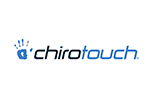When you choose 24/7 Medical Billing Services, you choose a team that holds a decade long experience in medical billing and revenue cycle management (RCM) services. The process of medical billing is stated as the process of communication between the medical provider and the payer.
We firmly believe in updating ourselves in technology and trends. We have certified multi-specialty expertise in diverse services. We have an ever-growing list of clients who have been with us for long and recommend us to their associates. Count on us for handling your billing. We have the experience as well as the expertise to help you manage all your billing-related chores in a highly professional manner.















.png)